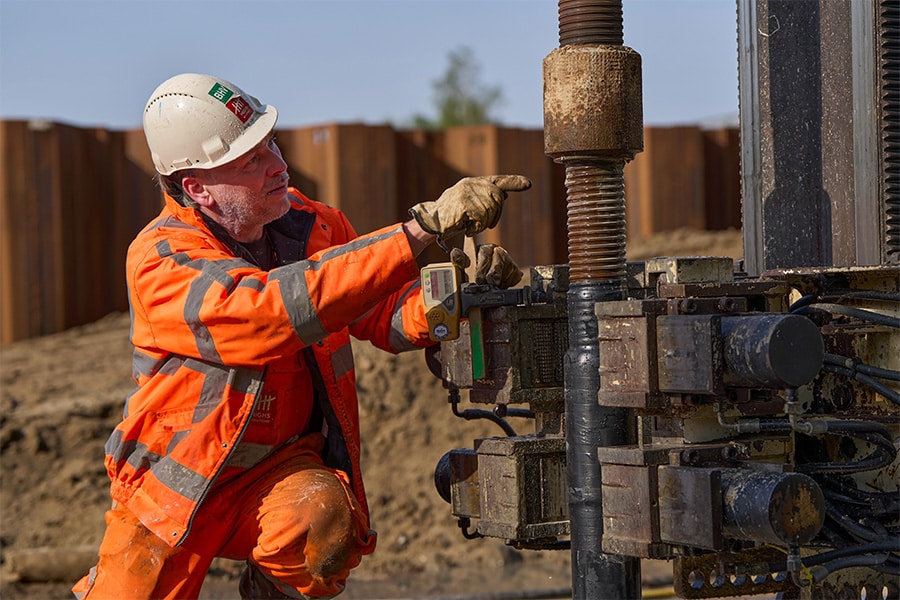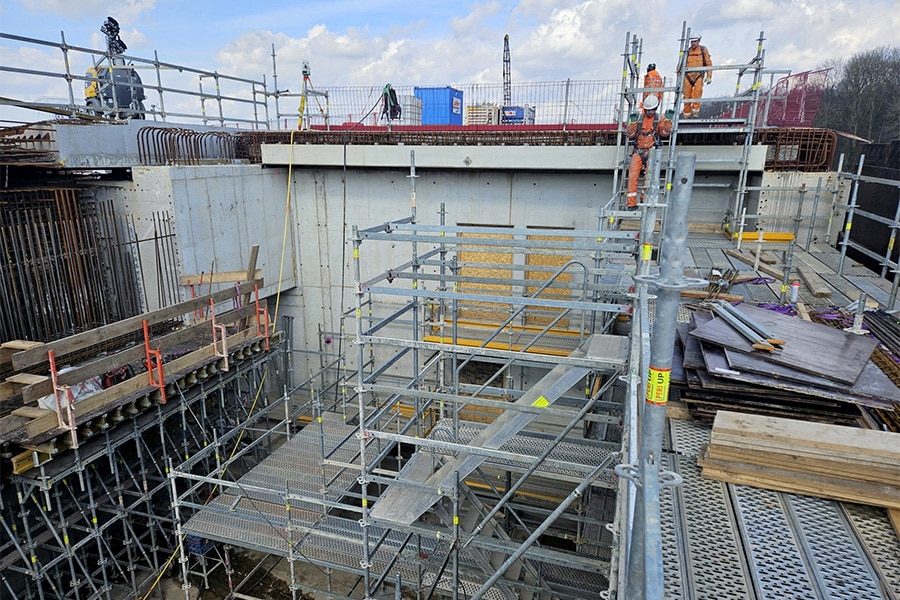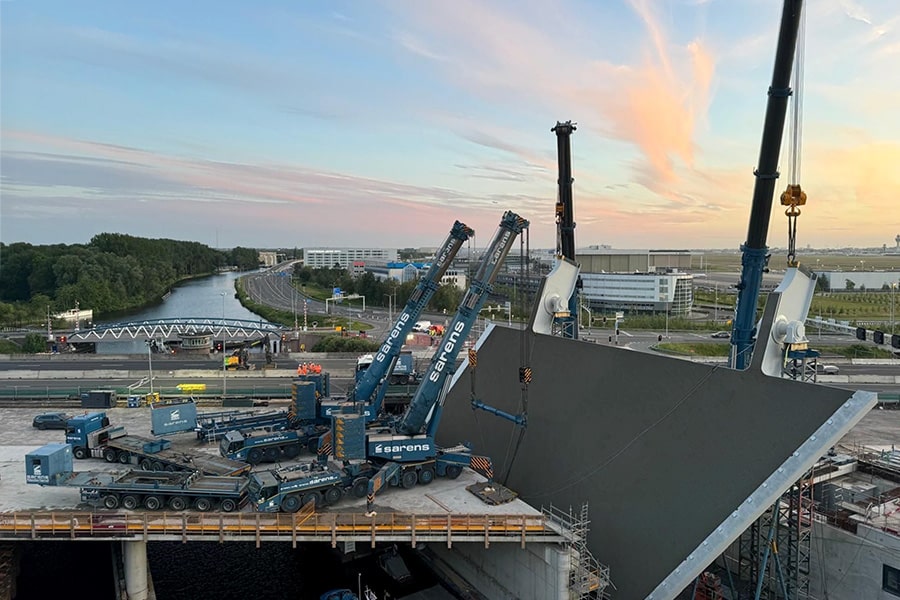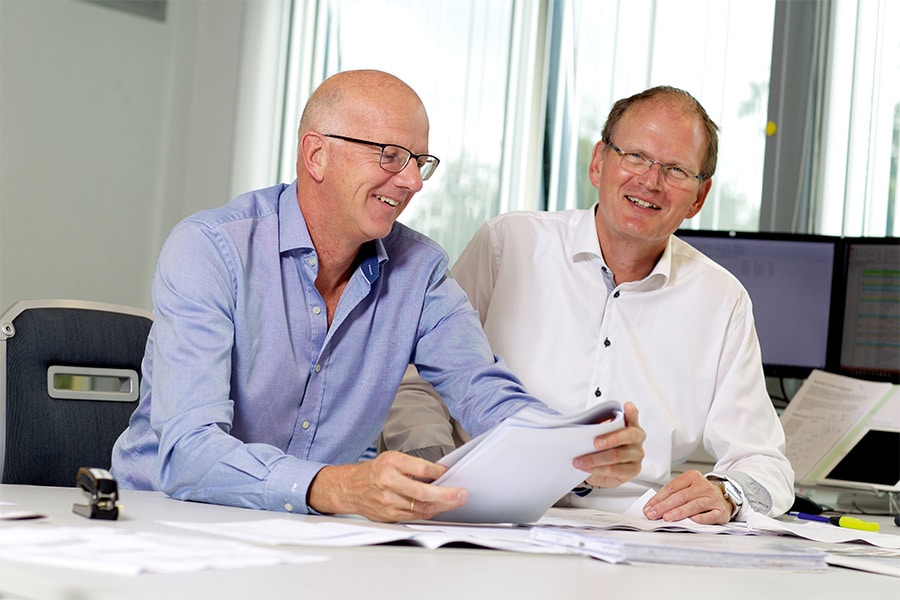
Fort Pampus and WFD Black Water reflect De Boer & De Groot's sustainable ambitions
Family business De Boer & De Groot civil works from Harlingen wants to become the most sustainable hydraulic engineering company in the Northern Netherlands. An ambition that cannot be realized overnight. And also not something that can be achieved by just 100% electrification. So how? Gerard de Boer, director and third generation De Boer, tells us more.
'You only see it when you realize it'. A quote from the late Johan Cruijff that Gerard likes to use to explain how thinking and acting sustainably affects all the choices we make. "Sustainability is in everything. How you design, which materials you use, where you get your materials from, how you process them, how you deal with each other and with the customer, but also with whom you work together and how this vision fits in with our sustainable ambitions; how you look at tenders and I could go on. If you really want to make progress, you have to make it manageable. In fact, it's all puzzle pieces that fit together at some point." But just electrifying your fleet and equipment won't get you there, Gerard believes. "Sustainability is subject to change. Because what is sustainability really? If you put sustainability first, innovation within your company must also be about sustainability. Electrification is 'only' a part of the whole. If I look at our fleet, half of it is electric. We also have several electric forklifts and cranes. Those are the first steps toward working completely emission-free."

Mindset on 'green'
On their path to sustainability, the family-owned company is not going about it overnight. "We are traditionally a manufacturing company. In the post-war years, for example, my grandfather mainly built small-scale dams, bridges and weirs for farmers. Today we are still a manufacturing company but the way and what we build has changed a lot over the years. Change starts with awareness within your company. That's what we've been working hard on in recent years. In 2023, we reorganized our company to actually translate our sustainable ambitions into practice."
Challenged
Living up to its sustainable ambitions also means that De Boer & De Groot makes choices in projects. For instance, its ambition is to carry out all projects completely emission-free by 2035. The first steps have also been taken in this direction. A good example is the Zwarte Water WFD project of the Directorate-General for Public Works and Water Management. Within this Natura 2000 area, lee zones are being created, in part by installing a sheet piling and a slow-flowing side channel. Fish can spawn in these lee zones to increase and enrich the fish stock. "Rijkswaterstaat challenged us in the tender to work as emission-free as possible. This led us, together with ELM from Waddinxveen, to develop our first electric foundation machine with a battery pack and an output of 525 kW. So far, it is still the first of its kind in the Netherlands. We also equipped one of our tugboats from 1962 with an electric motor and battery pack. Within the project area, this allows us to operate entirely electrically. We were able to take these steps partly thanks to the good cooperation with Rijkswaterstaat in their projects."

Fine example of sustainable work
The transformation of Fort Island Pampus into a 100% self-sufficient and fossil-free island is another fine example of a sustainable project the company is proud to be working on. Here, De Boer & De Groot, as a partner in the project, is making temporary port facilities for the supply of materials and construction equipment, earth moving and the installation of sheet piling, among other things.
Future
Looking at all the developments De Boer & De Groot is going through, Gerard is more than proud of the family business and its people. "I am also certainly very curious about what the future will bring. In any case, we as De Boer & De Groot want to be a sustainable part of this."



